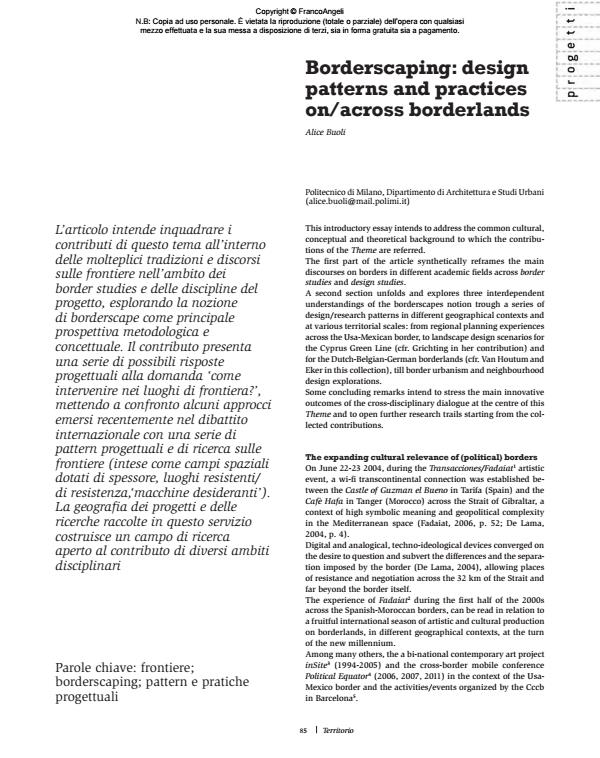Borderscaping: design patterns and practices on/across borderlands
Titolo Rivista TERRITORIO
Autori/Curatori Alice Buoli
Anno di pubblicazione 2015 Fascicolo 2015/72
Lingua Inglese Numero pagine 10 P. 85-94 Dimensione file 382 KB
DOI 10.3280/TR2015-072014
Il DOI è il codice a barre della proprietà intellettuale: per saperne di più
clicca qui
Qui sotto puoi vedere in anteprima la prima pagina di questo articolo.
Se questo articolo ti interessa, lo puoi acquistare (e scaricare in formato pdf) seguendo le facili indicazioni per acquistare il download credit. Acquista Download Credits per scaricare questo Articolo in formato PDF

FrancoAngeli è membro della Publishers International Linking Association, Inc (PILA)associazione indipendente e non profit per facilitare (attraverso i servizi tecnologici implementati da CrossRef.org) l’accesso degli studiosi ai contenuti digitali nelle pubblicazioni professionali e scientifiche
L’articolo intende inquadrare i contributi di questo tema all’interno delle molteplici tradizioni e discorsi sulle frontiere nell’ambito dei border studies e delle discipline del progetto, esplorando la nozione di borderscape come principale prospettiva metodologica e concettuale. Il contributo presenta una serie di possibili risposte progettuali alla domanda ‘come intervenire nei luoghi di frontiera?’, mettendo a confronto alcuni approcci emersi recentemente nel dibattito internazionale con una serie di pattern progettuali e di ricerca sulle frontiere (intese come campi spaziali dotati di spessore, luoghi resistenti/ di resistenza,‘macchine desideranti’). La geografia dei progetti e delle ricerche raccolte in questo servizio costruisce un campo di ricerca aperto al contributo di diversi ambiti disciplinari
Parole chiave:Frontiere; borderscaping; pattern e pratiche progettuali
Alice Buoli, Borderscaping: design patterns and practices on/across borderlands in "TERRITORIO" 72/2015, pp 85-94, DOI: 10.3280/TR2015-072014